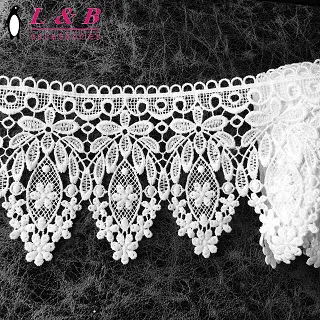The Timeless Elegance of Embroidery Lace: A Crafting Delight
2024-10-16
Embroidery lace is a beautiful and intricate textile art form that has captivated generations. Known for its delicate designs and versatility, this unique craft brings elegance to a wide range of applications, from fashion to home decor. In this blog, we’ll explore the history, techniques, and modern uses of embroidery lace, inspiring you to incorporate this timeless craft into your projects.
A Brief History of Embroidery Lace
The origins of embroidery lace can be traced back to ancient civilizations, but it gained widespread popularity during the Renaissance in Europe. Initially, lace was handcrafted using techniques such as needle lace and bobbin lace. These styles required immense skill and patience, as artisans painstakingly created intricate patterns using fine threads.
By the 19th century, the invention of sewing machines revolutionized the production of lace, making it more accessible to the masses. Today, embroidery lace combines traditional craftsmanship with modern technology, allowing for even more creativity and precision.
Techniques of Embroidery Lace
Embroidery lace encompasses various techniques, each contributing to its charm and uniqueness. Here are some popular methods:
1. Needle Lace
Needle lace is created using a needle and thread to form intricate patterns. This technique often involves a series of stitches that build up the lace design, resulting in a delicate and airy finish. Needle lace is typically used for high-quality garments and heirloom projects.
2. Bobbin Lace
In bobbin lace making, threads are wound onto bobbins and intertwined to create patterns. This technique is often characterized by its geometric designs and is commonly used for making trims and borders for clothing and home decor.
3. Machine Embroidery Lace
With advancements in technology, machine embroidery has become a popular way to create lace designs quickly and efficiently. This method allows for more intricate patterns and larger production runs while maintaining high quality.
4. Crochet Lace
Crochet lace involves using a hooked needle to create lace designs through interlocking loops of yarn. This technique is popular for making lace doilies, table runners, and garment embellishments, providing a cozy and handmade touch.
The Versatility of Embroidery Lace
Embroidery lace is incredibly versatile, finding applications in various areas:
1. Fashion
From wedding dresses to everyday wear, embroidery lace adds a touch of elegance to garments. Designers often use lace to create stunning overlays, trims, and accents, enhancing the overall aesthetic of clothing.
2. Home Decor
Lace can transform any space with its delicate beauty. It is commonly used in curtains, tablecloths, and pillowcases, adding an air of sophistication and charm to home interiors. Embroidery lace can also be used for crafting unique wall hangings and decorative pieces.
3. Craft Projects
Embroidery lace is a favorite among crafters. It can be used to embellish scrapbooks, cards, and other DIY projects. Adding lace details can elevate the visual appeal of handmade items, making them special and memorable.
4. Event Decor
Whether it's a wedding, baby shower, or anniversary celebration, embroidery lace is often incorporated into event decor. From table settings to backdrop designs, lace adds a romantic and timeless element to any occasion.
Tips for Working with Embroidery Lace
If you’re inspired to incorporate embroidery lace into your projects, here are some helpful tips:
1. Choose Quality Materials
Invest in high-quality lace for the best results. Whether you opt for handmade lace or machine-made options, ensure the materials complement your project.
2. Plan Your Design
Before starting, plan how you want to incorporate lace into your project. Sketching out your design can help you visualize the final product and ensure a cohesive look.
3. Experiment with Color
While traditional embroidery lace is often white or cream, don’t hesitate to experiment with colored lace. Adding a pop of color can bring a modern twist to classic designs.
4. Mix and Match Techniques
Feel free to combine different lace-making techniques in your projects. Mixing needle lace with crochet or machine embroidery can create unique textures and patterns.
Conclusion
Embroidery lace is more than just a decorative element; it’s a testament to craftsmanship and creativity that has stood the test of time. Whether you're a seasoned crafter or a novice looking to explore new techniques, incorporating embroidery lace into your projects can enhance their beauty and elevate your artistic expression.
So, gather your materials, unleash your creativity, and let the timeless elegance of embroidery lace inspire your next masterpiece!



